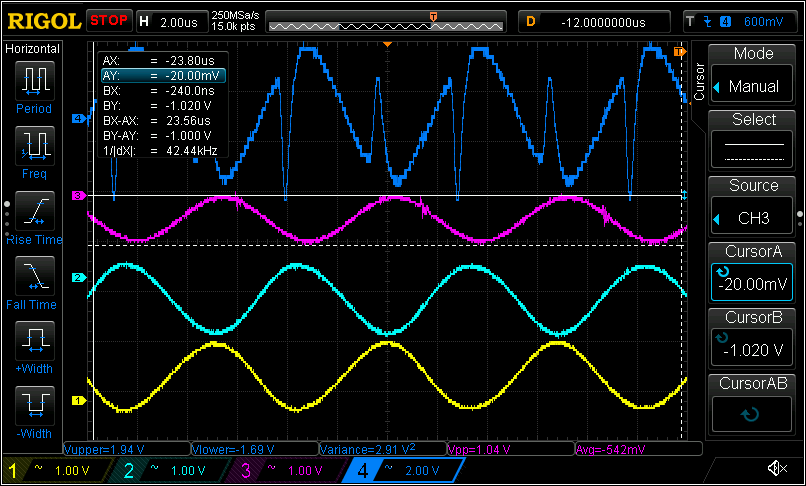Hello,
We are having the exact same problem as this post :https://e2e.ti.com/support/amplifiers/f/14/t/723500?AFE031-signal-distortion
Here is our screenshot.
Ch1 : TP1 - PGAin
CH2 : TP2 - TX PGA-out
CH3 : TP11 - TX_F_Out
CH4: TP3 - PA_Out
We are using the BOOSTXL-AFE031-DF1 developpement board. We had to modify the PCB in order to be in "PWM mode" (I am actually using an external DAC connected to TX_PGA_IN). The modification is only to cut the trace going to ground on pin 16 TX_F_IN2. Without this modification there is no bias at the output of the filter when the TX block gets activated.
The distortion problem arise when we connect our line coupling system to the dev board (custom coupling transformer with 1.6 TX ratio).
When we use only resistive charges without the powerline (connected directly to the BOOSTXL) the sinewave stays clean even down to 2 ohms load.
When connected to the powerline with our coupling transformer, if the "line load" is not to big (around 50 ohms at 144khz) the sinewave stays clean but when the line load gets a bit heavy (around 5-10 ohms at 144khz) then we get the distortion problem. In short, if the PA has to output a bit of current on the line it distort a lot.
It is not a problem of current flag or thermal flag (neither of those are triggered) has this was suggested by TI.
I will try with different inductive load an see if I can reproduce the problem without being connected to the powerline but I will be happy if anybody have any cue !
Thanks !



